Liver Enzyme Normal Range: Understanding High, Low, and Normal Results
What are liver enzymes. How do liver enzyme levels indicate liver health. What causes abnormal liver enzyme levels. How are liver function tests interpreted. What symptoms are associated with liver enzyme abnormalities. How can liver enzyme levels be normalized.
The Significance of Liver Enzymes in Health Assessment
Liver enzymes play a crucial role in assessing overall liver health and function. These enzymes, primarily produced by liver cells, are involved in various metabolic processes. When liver cells are damaged or inflamed, these enzymes leak into the bloodstream, resulting in elevated levels that can be detected through blood tests.
The most commonly measured liver enzymes include:
- Alanine aminotransferase (ALT)
- Aspartate aminotransferase (AST)
- Alkaline phosphatase (ALP)
- Gamma-glutamyl transferase (GGT)
Understanding the normal ranges and implications of abnormal levels is essential for healthcare professionals and patients alike. Elevated liver enzymes can indicate various liver conditions, while low levels may suggest other health issues.

Decoding Liver Enzyme Test Results: Normal, High, and Low Levels
Interpreting liver enzyme test results requires knowledge of the normal ranges for each enzyme. These ranges can vary slightly depending on the laboratory and testing methods used. Generally, the normal ranges are:
- ALT: 7-55 units per liter (U/L)
- AST: 8-48 U/L
- ALP: 45-115 U/L
- GGT: 9-48 U/L
High levels of liver enzymes often indicate liver damage or inflammation. For instance, elevated ALT and AST levels are commonly associated with conditions such as viral hepatitis, alcoholic liver disease, and nonalcoholic fatty liver disease (NAFLD). Elevated ALP levels may suggest biliary tract issues or certain bone disorders.
Conversely, low liver enzyme levels are less common but can still be significant. Low ALT levels, for example, have been associated with vitamin B6 deficiency and certain genetic disorders.
Common Causes of Elevated Liver Enzymes
Several factors can contribute to elevated liver enzyme levels:
- Viral infections (hepatitis A, B, C)
- Alcohol abuse
- Nonalcoholic fatty liver disease
- Certain medications
- Autoimmune liver diseases
- Liver cancer
- Obesity
- Metabolic syndrome
It’s important to note that temporary elevations in liver enzymes can occur due to factors such as strenuous exercise or certain dietary supplements. Therefore, healthcare providers often recommend repeat testing to confirm persistent abnormalities.
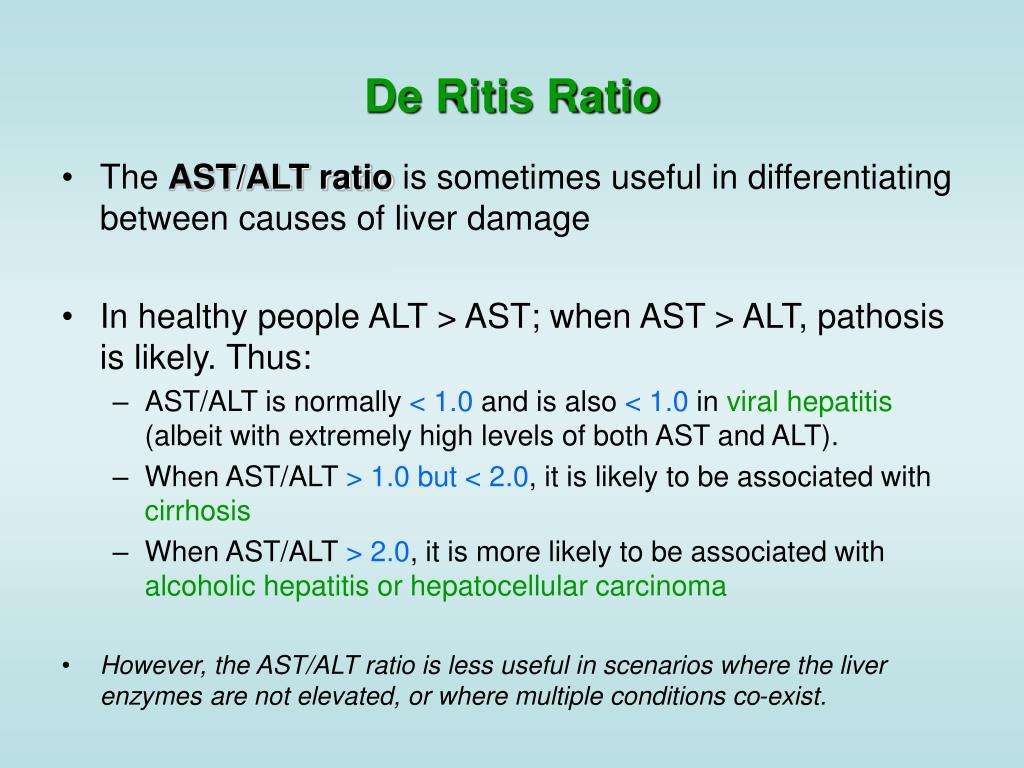
Symptoms Associated with Abnormal Liver Enzyme Levels
While abnormal liver enzyme levels themselves do not typically cause symptoms, the underlying conditions responsible for these abnormalities may produce various signs and symptoms. These can include:
- Jaundice (yellowing of the skin and eyes)
- Fatigue
- Abdominal pain or discomfort
- Nausea and vomiting
- Loss of appetite
- Dark urine
- Pale stools
- Itchy skin
It’s crucial to understand that liver enzyme abnormalities can be present without any noticeable symptoms, highlighting the importance of regular health check-ups and liver function tests, especially for individuals at higher risk of liver disease.
Interpreting Liver Function Tests: Beyond Enzyme Levels
While liver enzymes are vital indicators of liver health, a comprehensive liver function test panel typically includes additional parameters that provide a more complete picture of liver function. These may include:
- Bilirubin levels
- Albumin
- Prothrombin time
- Total protein
The ratio of AST to ALT can also provide valuable insights. An AST/ALT ratio greater than 2:1 is often associated with alcoholic liver disease, while a ratio less than 1 is more commonly seen in viral hepatitis and nonalcoholic fatty liver disease.

Interpreting these tests in conjunction with liver enzyme levels allows healthcare providers to make more accurate diagnoses and develop appropriate treatment plans. For instance, elevated bilirubin levels alongside abnormal liver enzymes may indicate more severe liver dysfunction or biliary tract issues.
Strategies for Normalizing Liver Enzyme Levels
For individuals with abnormal liver enzyme levels, several strategies can help normalize these values and improve overall liver health:
- Lifestyle modifications:
- Reducing or eliminating alcohol consumption
- Adopting a balanced, liver-friendly diet
- Increasing physical activity and maintaining a healthy weight
- Managing stress through relaxation techniques or meditation
- Treating underlying conditions:
- Antiviral therapy for viral hepatitis
- Management of autoimmune liver diseases
- Addressing metabolic syndrome and insulin resistance
- Medication adjustments:
- Reviewing and potentially modifying medications that may be causing liver enzyme elevations
- Considering hepatoprotective supplements under medical supervision
- Regular monitoring:
- Following up with healthcare providers for repeat liver function tests
- Adhering to recommended screening schedules for liver diseases
It’s important to note that the approach to normalizing liver enzyme levels should be tailored to the individual’s specific condition and overall health status. Consulting with a healthcare professional is crucial for developing an appropriate management plan.

The Role of Liver Enzymes in Specific Medical Conditions
Liver enzyme levels can provide valuable insights into various medical conditions beyond primary liver diseases. Understanding these associations can aid in diagnosis and management:
Pregnancy and Liver Enzymes
During pregnancy, mild elevations in liver enzymes can occur due to normal physiological changes. However, significant elevations may indicate pregnancy-specific liver disorders such as intrahepatic cholestasis of pregnancy or preeclampsia. Regular monitoring of liver function tests during pregnancy is essential for early detection and management of these conditions.
Metabolic Syndrome and Nonalcoholic Fatty Liver Disease
Elevated liver enzymes, particularly ALT, are commonly observed in individuals with metabolic syndrome and nonalcoholic fatty liver disease (NAFLD). The presence of these elevated enzymes, along with other metabolic risk factors, can help identify patients at higher risk of developing more severe liver conditions such as nonalcoholic steatohepatitis (NASH) and cirrhosis.

Cardiovascular Health and Liver Enzymes
Recent research has suggested a potential link between liver enzyme levels and cardiovascular health. Some studies have found associations between elevated liver enzymes and increased risk of cardiovascular events. For example, higher GGT levels have been linked to an increased risk of heart disease and stroke. While the exact mechanisms are not fully understood, these findings highlight the importance of considering liver health in overall cardiovascular risk assessment.
Advanced Liver Enzyme Analysis: Isoenzymes and Genetic Factors
Beyond standard liver enzyme tests, advanced analysis techniques can provide more detailed information about liver health and function:
Liver Enzyme Isoenzymes
Liver enzymes can exist in multiple forms called isoenzymes. These isoenzymes can be specific to certain organs or tissues. For example, AST has cytosolic and mitochondrial isoenzymes. Analyzing these isoenzymes can help pinpoint the source of enzyme elevations more accurately. This information can be particularly useful in differentiating between liver and muscle damage, as both can cause elevations in AST and ALT.
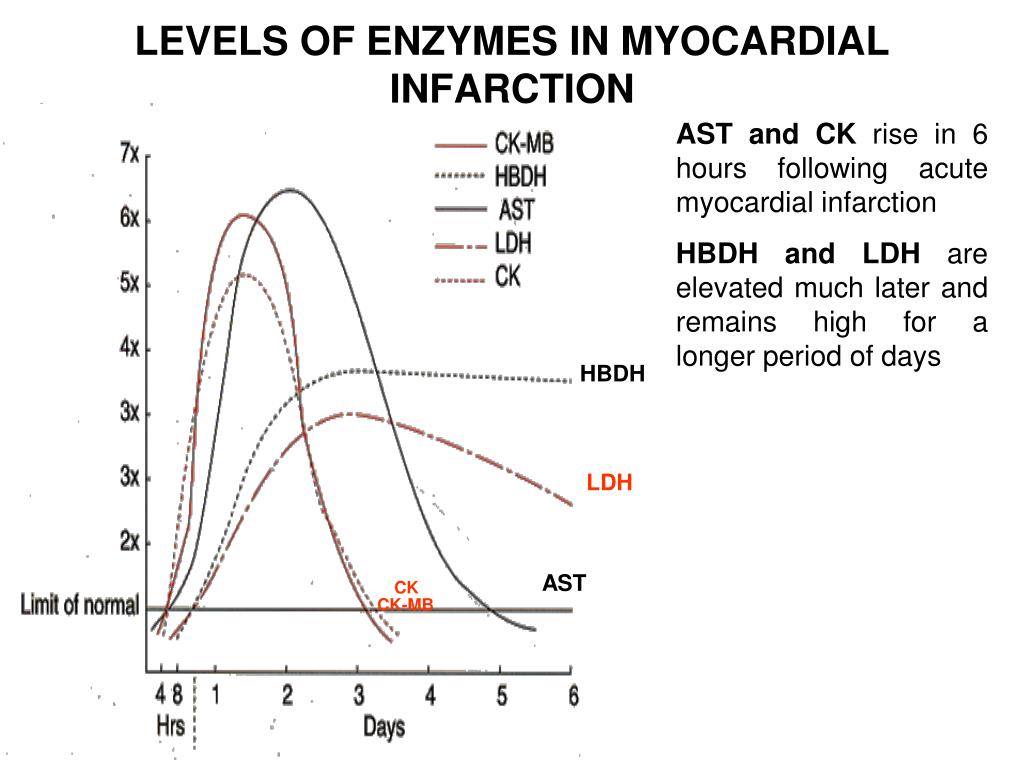
Genetic Factors Influencing Liver Enzyme Levels
Genetic variations can impact an individual’s baseline liver enzyme levels and their susceptibility to liver diseases. For instance:
- Gilbert’s syndrome, a common genetic condition, can cause mild elevations in bilirubin levels without indicating liver disease.
- Certain genetic polymorphisms have been associated with an increased risk of drug-induced liver injury, which can manifest as elevated liver enzymes.
- Genetic testing for variants associated with hereditary liver diseases can provide valuable information for diagnosis and management.
Understanding these genetic factors can help healthcare providers interpret liver enzyme results more accurately and develop personalized treatment plans.
Liver Enzymes in Special Populations: Pediatrics and Geriatrics
Interpreting liver enzyme levels requires special consideration in certain populations:
Pediatric Liver Enzyme Evaluation
In children, liver enzyme levels and their interpretation can differ from adults. Factors to consider include:

- Age-specific reference ranges for liver enzymes
- Unique pediatric liver conditions such as biliary atresia
- The impact of growth and development on liver function
Regular monitoring of liver enzymes in children with chronic liver diseases or those on long-term medications is crucial for early detection of complications and appropriate management.
Geriatric Considerations in Liver Enzyme Analysis
In older adults, several factors can influence liver enzyme levels and their interpretation:
- Age-related changes in liver function and structure
- Increased prevalence of chronic diseases affecting liver health
- Polypharmacy and potential drug-induced liver injury
- Nutritional status and its impact on liver function
Healthcare providers must consider these factors when evaluating liver enzyme results in older patients to avoid misdiagnosis and ensure appropriate management.
Future Directions in Liver Enzyme Research and Diagnostics
The field of liver enzyme research and diagnostics continues to evolve, with several promising areas of development:
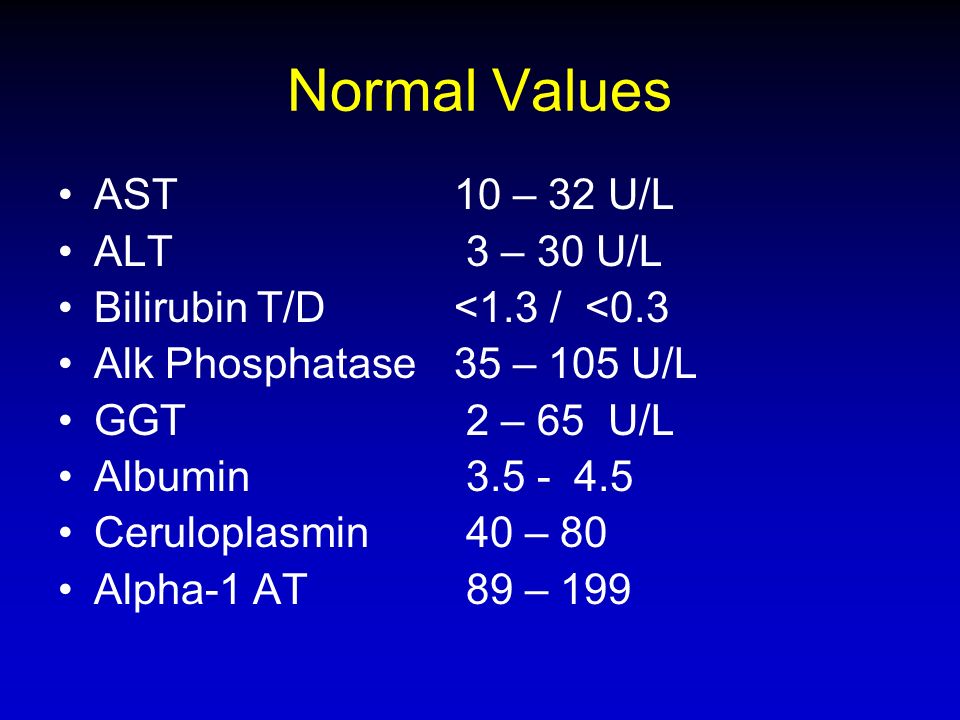
Novel Biomarkers for Liver Health
Researchers are investigating new biomarkers that may provide more specific and sensitive indications of liver health. These include:
- Cytokeratin-18 fragments for assessing liver cell death
- microRNAs as potential markers of liver injury and disease progression
- Proteomics-based biomarkers for early detection of liver fibrosis
These novel biomarkers may complement traditional liver enzyme tests, offering more precise diagnostic and prognostic information.
Non-Invasive Imaging Techniques
Advancements in imaging technologies are providing new ways to assess liver health in conjunction with enzyme tests:
- Elastography techniques for assessing liver fibrosis
- Advanced MRI methods for quantifying liver fat content
- Molecular imaging for detecting specific liver diseases
These non-invasive techniques can provide valuable structural and functional information about the liver, enhancing the interpretation of liver enzyme results.
Personalized Medicine Approaches
The integration of genetic information, lifestyle factors, and environmental exposures is paving the way for more personalized approaches to liver health assessment and management. This may include:
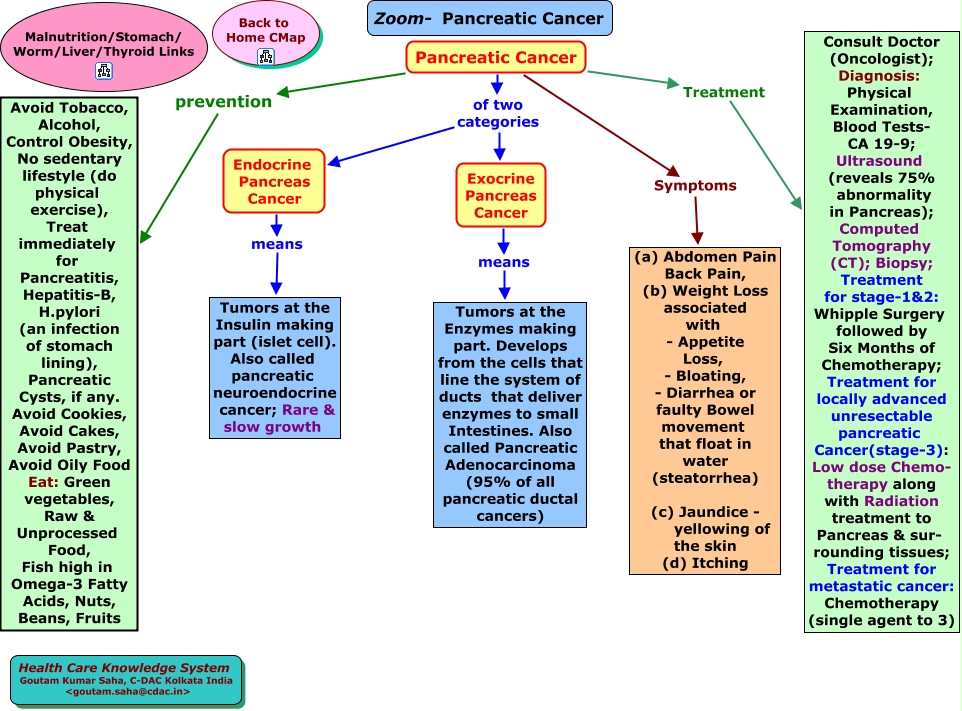
- Pharmacogenomic testing to predict individual responses to liver-metabolized medications
- Risk stratification models incorporating genetic and environmental factors for liver disease prediction
- Tailored lifestyle interventions based on individual liver enzyme profiles and risk factors
These personalized approaches hold promise for improving the accuracy of liver disease diagnosis and the effectiveness of interventions to normalize liver enzyme levels.
As research in these areas continues to advance, healthcare providers and patients can look forward to more sophisticated and individualized approaches to liver health assessment and management. The ongoing evolution of liver enzyme diagnostics underscores the importance of staying informed about the latest developments in this field.
A review on laboratory liver function tests
1. Mauro P, Renze B, Wouter W. In: Tietz text book of clinical chemistry and molecular diagnostics. 4th edition. Carl AB, Edward R, David EB, editors. Elsevier; 2006. Enzymes; pp. 604–616. [Google Scholar]
2. Diana Nicoll C. In: Current medical diagnosis and treatment. 46th edition. Stephen JM, Maxine AP, editors. Mc Graw hill; 2007. Appendix: Therapeutic drug monitoring and laboratory reference ranges; pp. 1767–1775. [Google Scholar]
3. Thapa BR, Anuj W. Liver Function Tests and their Interpretation. Indian J Pediatr. 2007;74:663–671. [PubMed] [Google Scholar]
4. Wong HY, Tan JYL, Lim CC. Abnormal liver function test in symptomatic pregnant patient: The local experience in Singapore. Annals academy of Medicine. 2004;33:204–208. [PubMed] [Google Scholar]
5. Beckingham IJ, Ryder SD. Clinical review ABC of diseases of liver, pancreas, and biliary system Investigation of liver and biliary disease. BMJ. 2001;322:33–36. [PMC free article] [PubMed] [Google Scholar]
[PMC free article] [PubMed] [Google Scholar]
6. Thomsen HF, Hardt F, Juhl E. Diagnosis of Gilbert’s syndrome. Scand J Gastroenterol. 1981;16:699–703. [PubMed] [Google Scholar]
7. Tiribelli C, Ostrow JD. New concepts in bilirubin and jaundice: report of the Third International Bilirubin Workshop, April 6–8, 1995, Trieste, Italy. Hepatology. 1996;24:1296–1311. [PubMed] [Google Scholar]
8. Alvarez F, Berg PA, Bianchi FB. et al. International Autoimmune Hepatitis Group Report: review of criteria for diagnosis of autoimmune hepatitis. J Hepatol. 1999;31:929–38. [PubMed] [Google Scholar]
9. Daniel SP, Marshal MP. In: Schiff’s diseases of the liver. 10th edition. Eugene RS, Michel FS, Willis CM, editors. Vol. 1. Lippincott Williams and Wilkins; 2007. Laboratory test; pp. 19–54. [Google Scholar]
10. Khan S. Evaluation of hyperbilirubinemia in acute inflammation of appendix: A prospective study of 45 cases. Kathmandu Univ Med J. 2006;4:281–289. [PubMed] [Google Scholar]
11. Bacq Y, Zarka O, Brechot JF. et al. Liver function tests in normal pregnancy a prospective study of 103 pregnant women and 103 matched controls. Hepatology. 1996;23:1030–1034. [PubMed] [Google Scholar]
Bacq Y, Zarka O, Brechot JF. et al. Liver function tests in normal pregnancy a prospective study of 103 pregnant women and 103 matched controls. Hepatology. 1996;23:1030–1034. [PubMed] [Google Scholar]
12. Perlstein TS, Pande RL, Creager MA. et al. Serum total bilirubin level prevalent stroke and stroke outcomes. NHANES 1999–2004. Am J Med. 2008;121:781–788. [PMC free article] [PubMed] [Google Scholar]
13. Kallei L, Hahn A, Roder VZ. Correlation between histological findings and serum transaminase values in chronic diseases of the liver. Acta Medica Scandinavika. 1964;175:49–56. [PubMed] [Google Scholar]
14. Marcellin P. Hepatitis C: the clinical spectrum of the disease. J Hepatol. 1999;31:9–16. [PubMed] [Google Scholar]
15. Sheth SG, Gordon FD, Chopra S. Nonalcoholic steatohepatitis. Ann Intern Med. 1997;126:137–145. [PubMed] [Google Scholar]
16. James D, Tania SB, Sara ET. et al. Alanine Aminotransferase Levels and Fatty Liver in Childhood Obesity: Associations with Insulin Resistance, Adiponectin, and Visceral Fat. J Clin Endocrinol Metab. 2006;91:4287–4294. [PubMed] [Google Scholar]
J Clin Endocrinol Metab. 2006;91:4287–4294. [PubMed] [Google Scholar]
17. Tzong-Hsi L, Yung-Hsuan S, Wei-Shiung Y. et al. Bright Liver and Alanine Aminotransferase Are Associated with Metabolic Syndrome in Adults. Obesity Research. 2005;13:1238–1245. [PubMed] [Google Scholar]
18. Everhart JE, Ruhl CE. Coffee and caffeine consumption reduce the risk of elevated serum alanine aminotransferase activity in the United States. Gastroenterology. 2005;128:24–32. [PubMed] [Google Scholar]
19. Panteghini M, Falsetti F, Chiari E. et al. Determinaton of Aspartate aminotransferase isoenzymes in hepatic disease. Lab J Res Lab Med. 1983;10:515–519. [Google Scholar]
20. AGA Technical Review on the Evaluation of Liver Chemistry Tests. Gastroenterology. 2002;123:1367–1384. [PubMed] [Google Scholar]
21. Cohen JA, Kaplan MM. The SGOT/SGPT ratio – an indicator of alcoholic liver disease. Dig Dis Sci. 1979;24:835–838. [PubMed] [Google Scholar]
22. Diehl AM, Potter J, Boitnott J. et al. Relationship between pyridoxal 5′-phosphate deficiency and aminotransferase levels in alcoholic hepatitis. Gastroenterology. 1984;86:632–636. [PubMed] [Google Scholar]
et al. Relationship between pyridoxal 5′-phosphate deficiency and aminotransferase levels in alcoholic hepatitis. Gastroenterology. 1984;86:632–636. [PubMed] [Google Scholar]
23. Edoardo Giannini, Domenico Risso, Federica Botta. et al. Validity and Clinical Utility of the Aspartate Aminotransferase–Alanine Aminotransferase Ratio in Assessing Disease Severity and Prognosis in Patients with Hepatitis C Virus–Related Chronic Liver Disease. Arch Intern Med. 2003;163:218–224. [PubMed] [Google Scholar]
24. Sayal SK, Gupta CM, Das AL. et al. A comparative study of liver function tests in patients of chronic liver disorders with and without cutaneous manifestations. Ind J Dermatol Venereol Leprol. 1997;63:15–19. [PubMed] [Google Scholar]
25. Giannini E, Botta F, Testa E. et al. The 1-year and 3-month prognostic utility of the AST/ALT ratio and model for end-stage liver disease score in patients with viral liver cirrhosis. Am J Gastroenterol. 2002;97:2855–2860. [PubMed] [Google Scholar]
26.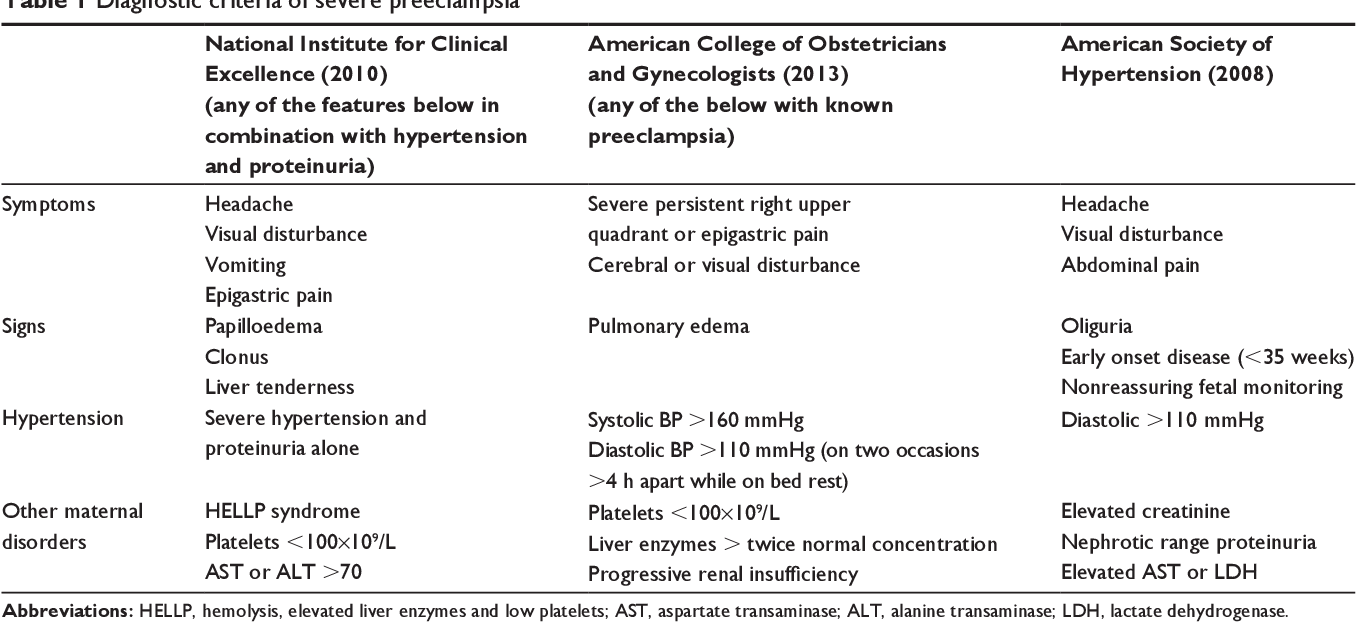 Giannini E, Botta F, Fasoli A. et al. Progressive liver functional impairment is associated with an increase in AST/ALT ratio. Dig Dis Sci. 1999;44:1249–1253. [PubMed] [Google Scholar]
Giannini E, Botta F, Fasoli A. et al. Progressive liver functional impairment is associated with an increase in AST/ALT ratio. Dig Dis Sci. 1999;44:1249–1253. [PubMed] [Google Scholar]
27. Sorbi D, Boynton J, Lindor KD. The ratio of aspartate aminotransferase to alanine aminotransferase: potential value in differentiating nonalcoholic steatohepatitis from alcoholic liver disease. Am J Gastroenterol. 1999;94:1018–1022. [PubMed] [Google Scholar]
28. Christoph E, Olivia S, Wolfgang S. Diagnostic criteria for acute liver failure due to Wilson disease. World J Gastroenterol. 2007;13:1711–1714. [PMC free article] [PubMed] [Google Scholar]
29. Bayraktar M, Van T. Abnormalities in measures of liver function and injury in thyroid disorders. Hepatogastroenterology. 1997;44:1614–1618. [PubMed] [Google Scholar]
30. Rosalki SB, Mcintyre N. 2nd ed. New York: Oxford university press; 1999. Biochemical investigations in the management of liver disease; pp. 503–521. Oxford textbook of clinical hepatology. [Google Scholar]
[Google Scholar]
31. Simko V. Alkaline phosphatases in biology and medicine. Dig Dis. 1991;9:189–193. [PubMed] [Google Scholar]
32. Ilham MA, Cookson A, Dheerendra S. et al. Idiopathic severe elevation of serum alkaline phosphatase following adult renal transplantation: case reports. Transplant Proc. 2008;40:2059–2061. [PubMed] [Google Scholar]
33. Cheung BM, Ong KL, Wong LY. Elevated serum alkaline phosphatase and peripheral arterial disease in the United States National Health and Nutrition Examination Survey 1999–2004. Int J Cardiol. 2009;135:156–161. [PubMed] [Google Scholar]
34. Giannini E, Botta F, Fasoli A. et al. Increased levels of gamma GGT suggest the presence of bile duct lesions in patients with chronic hepatitis C: absence of influence of HCV genotype, HCV-RNA serum levels, and HGV infection on this histological damage. Dig Dis Sci. 2001;46:524–529. [PubMed] [Google Scholar]
35. Wu A, Slavin G, Levi AJ. Elevated serum gamma-glutamyl-transferase (transpeptidase) and histological liver damage in alcoholism. Am J Gastroenterology. 1976;65:318–323. [PubMed] [Google Scholar]
Am J Gastroenterology. 1976;65:318–323. [PubMed] [Google Scholar]
36. Sugiura M, Nakamura M, Ikoma Y. et al. High serum carotenoids are inversely associated with serum gamma-glutamyl transferase in alcohol drinkers within normal liver function. Journal of epidemiology. 2005;15:180–186. [PMC free article] [PubMed] [Google Scholar]
37. McCullough AJ. Update on nonalcoholic fatty liver disease. J Clin Gastroenterol. 2002;34:255–262. [PubMed] [Google Scholar]
38. Martin JV, Hague RV, Martin PJ. et al. The association between serum triglycerides and gamma glutamyl transpeptidase activity in diabetes mellitus. Clin Biochem. 1976;9:208–211. [PubMed] [Google Scholar]
39. Smith K, Varon HH, Race GJ. et al. Serum 5′-nucleotidase in patients with tumour in the liver. Cancer. 1966;17:1281–1285. [PubMed] [Google Scholar]
40. Pratibha K, Usha A, Rajni A. Serum adenosine deaminase, 5′ nucleotidase and malondialdehyde in acute infective hepatitis. Ind J Clin Biochem. 2004;19:128–131.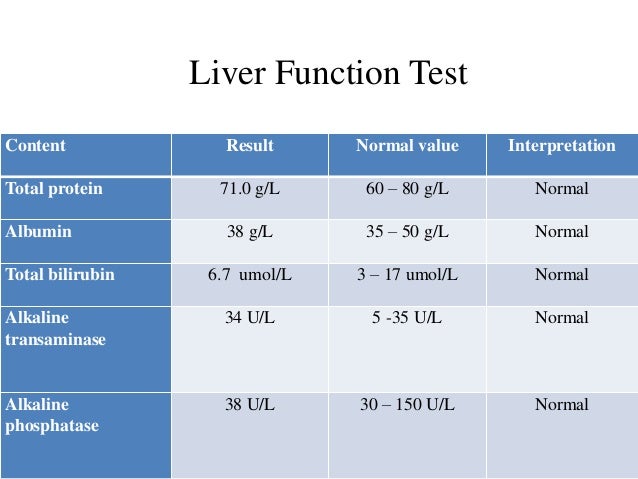 [PMC free article] [PubMed] [Google Scholar]
[PMC free article] [PubMed] [Google Scholar]
41. Miya F, Shigeru A, Fumitada H. et al. 5′-nucleotidase activities in sera and liver tissues of viral hepatitis patients. Journal of Gastroenterology. 1990;25:199–205. [PubMed] [Google Scholar]
42. LaRusso NF, Summerskill WH, McCall JT. et al. Abnormalities of chemical tests for copper metabolism in chronic active liver disease: differentiation from Wilson’s disease. Gastroenterology. 1976;70:653–655. [PubMed] [Google Scholar]
43. Zhifang Xie, Hai Zhang, Wenwei Tsai. Zinc finger protein ZBTB20 is a key repressor of alpha-fetoprotein gene transcription in liver. PNAS. 2008;105:10859–10864. [PMC free article] [PubMed] [Google Scholar]
44. Stewart Sell. Alpha-Fetoprotein, Stem Cells and Cancer How Study of the Production of Alpha-Fetoprotein during Chemical Hepatocarcinogenesis Led to Reaffirmation of the Stem Cell Theory of Cancer. Tumor Biol. 2008;29:161–180. [PMC free article] [PubMed] [Google Scholar]
45. Grizzi F, Franceschini B, Hamrick C. et al. Usefulness of cancer-testis antigens as biomarkers for the diagnosis and treatment of hepatocellular carcinoma. J Transl Med. 2007;5:3. [PMC free article] [PubMed] [Google Scholar]
et al. Usefulness of cancer-testis antigens as biomarkers for the diagnosis and treatment of hepatocellular carcinoma. J Transl Med. 2007;5:3. [PMC free article] [PubMed] [Google Scholar]
46. Males S, Gad RR, Esmat G. et al. Serum alpha-foetoprotein level predicts treatment outcome in chronic hepatitis C. Antivir Ther. 2007;12:797–803. [PubMed] [Google Scholar]
47. Zhou L, Liu J, Luo F. Serum tumor markers for detection of hepatocellular carcinoma. World J Gastroenterol. 2006;12:1175–1181. [PMC free article] [PubMed] [Google Scholar]
48. Hagiwara S, Kudo M, Kawasaki T, Nagashima M. et al. Prognostic factors for portal venous invasion in patients with hepatocellular carcinoma. J Gastroenterol. 2006;41:1214–1219. [PubMed] [Google Scholar]
49. Asmaa IG, Shahid AK, Edward LS. Diagnosis of hepatocellular carcinoma. World J Gastroenterol. 2009;15:1301–1314. [PMC free article] [PubMed] [Google Scholar]
50. Gordon CS, Angela M. Second-Trimester Maternal Serum Levels of Alpha-Fetoprotein and the Subsequent Risk of Sudden Infant Death Syndrome. N Engl J Med. 2004;351:978–986. [PubMed] [Google Scholar]
N Engl J Med. 2004;351:978–986. [PubMed] [Google Scholar]
High and low levels, and what do results mean
An AST blood test measures levels of aspartate aminotransferase (AST) and helps determine liver function. Too much of this enzyme can indicate a problem, such as liver damage.
Aspartate aminotransferase (AST) is an enzyme mostly found in the liver. AST is also present in other parts of the body, including the:
- kidneys
- heart
- muscles
Another name for the AST enzyme is serum glutamic-oxaloacetic transaminase (SGOT).
Most people have low levels of the AST enzyme. Damage to liver cells can cause the release of extra AST into the blood though, leading to higher levels of the enzyme.
After taking a blood test, doctors will classify AST ranges as normal, high, or low. Laboratories may use different testing methods for analyzing samples, so normal ranges can vary between each laboratory.
There is not an exact range for AST levels, as levels can vary among people and still be normal.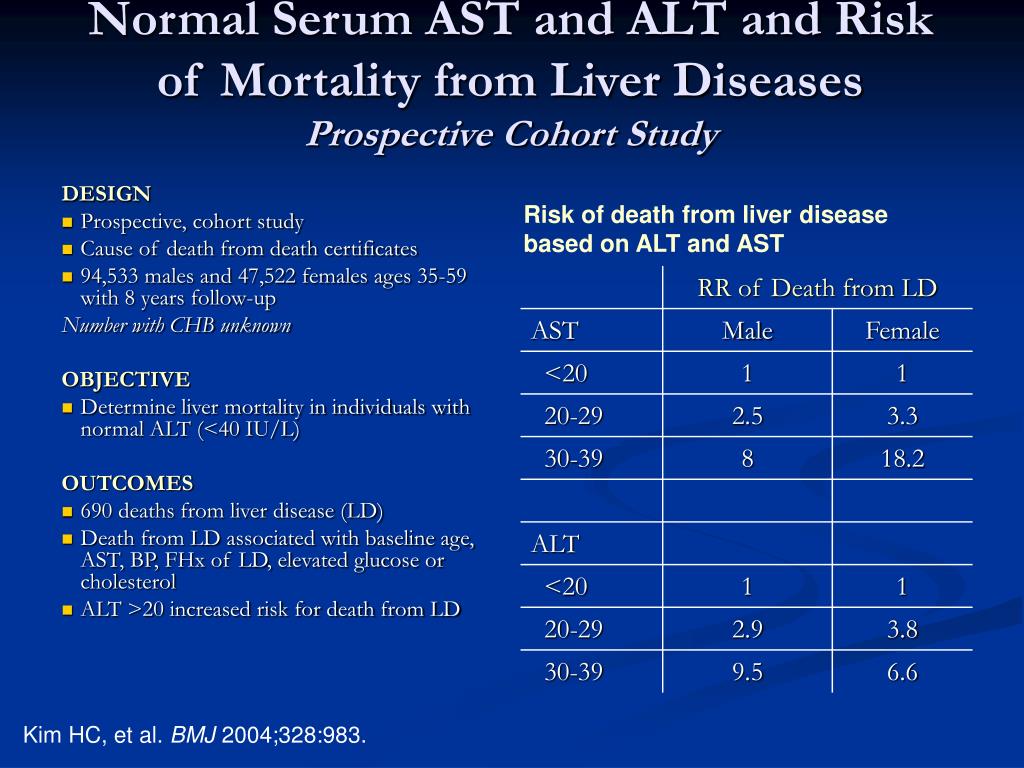 AST levels can vary depending on factors such as:
AST levels can vary depending on factors such as:
- age
- sex
- weight
- race
The measurements for AST levels are typically in units per liter (U/L) or international units per liter (IU/L). On a test result, the laboratory will usually list their specific reference range.
People will need to look at this reference range and discuss with their doctor what their test results mean for them. To understand the results of an AST blood test, a doctor will also look at other enzymes that can indicate a liver problem.
The following table indicates general AST blood test ranges. However, reference ranges can vary slightly among different laboratories.
| Adults | Children | |
|---|---|---|
| Normal | 10–40 IU/L | |
| High | >36 U/L >1,000 U/L are very high levels and may be a sign of liver injury or hepatitis | >40 IU/L which may be a sign of liver inflammation |
Results from an AST blood test can help indicate liver health.
If AST levels are high, it may also be a sign of:
- chronic hepatitis
- damage from alcohol
- cholestasis, a decrease in bile flow
- heart, kidney, bone, or muscle damage
- liver cancers
- liver scarring, known as liver cirrhosis
Very high AST levels are usually a sign of progressing liver damage, often due to acute hepatitis.
Low AST levels may indicate:
- vitamin B6 deficiency
- kidney disease
- liver disease
- cirrhosis
- cancer
- autoimmune conditions
- genetic conditions
A doctor may also test levels of alanine aminotransferase (ALT), another liver enzyme. ALT levels occur in higher concentrations in the liver.
If ALT levels are normal but AST levels are high, it could indicate a health problem outside of the liver, or it may be a sign of alcohol-induced liver damage.
Having high levels of AST and no other signs of a problem is not necessarily a cause for concern. People with normal liver function can have high AST levels, which may be due to:
People with normal liver function can have high AST levels, which may be due to:
- age
- sex
- race
- certain medications
A person should always discuss any medications or health products they take with a doctor.
Doctors primarily use the AST blood test to check for and assess liver problems, usually alongside other liver tests. The AST protein mainly occurs in the liver and heart. With liver damage, AST can leak from the liver into the bloodstream. When this happens, AST levels in the blood will be higher than normal.
AST also occurs in the brain, heart, kidneys, and muscles. If there is damage in any of these areas, AST levels may also increase.
To rule out issues affecting areas outside the liver, doctors may order a check of the second liver enzyme, ALT, at the same time. If both levels are high, it may indicate a problem with a person’s liver. If only AST levels are high, this may indicate a problem with another organ or system.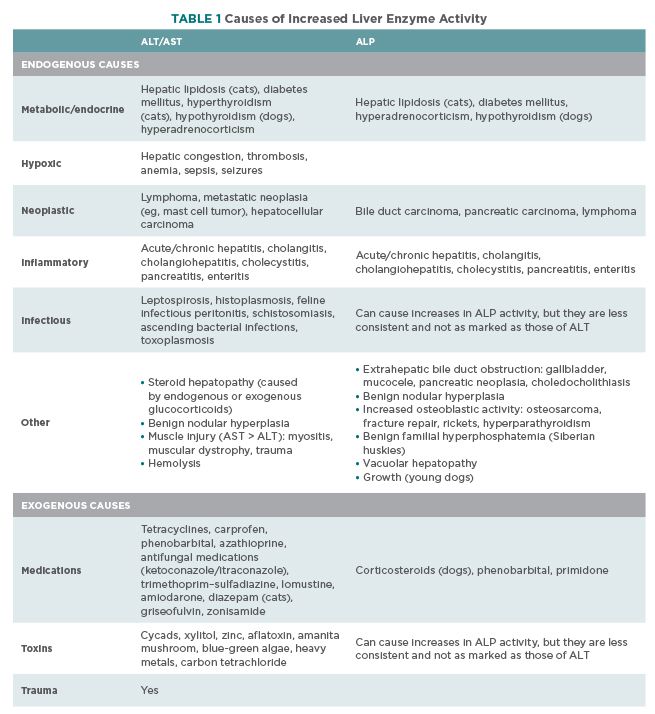
People may have an AST test for screening, diagnosis, or monitoring purposes. A doctor may recommend this test if a person:
- has risk factors for liver disease, such as family history, obesity, or diabetes
- has symptoms of a liver problem, such as jaundice, fatigue, or unexplained weight loss
- is undergoing treatment for a liver condition, as an AST blood test can help show how well treatment is working
Alanine aminotransferase (ALT) is an enzyme that mostly occurs in the liver. If there is damage to liver cells, ALT levels in the bloodstream can increase. An ALT test can help indicate liver health, along with other liver enzyme tests.
Healthcare professionals may use both ALT and AST tests to check for the presence of liver enzymes in the blood, as this can give them a clearer idea of overall liver function and health.
Learn more about the ALT test here.
The AST blood test is straightforward and similar to any other blood test. A healthcare professional may take the following steps:
A healthcare professional may take the following steps:
- sit the person down and tie a stretchy band around the upper arm to increase blood flow to that area
- clean the site of the blood draw with an antiseptic wipe
- insert a needle into a vein in the arm to take a blood sample, which may cause people to feel a mild prick or pain
- remove the needle once they have drawn enough blood
- send the blood sample to a laboratory for testing
An AST blood test will usually only take a few minutes in total.
In some cases, people may be able to take an AST test at home. Using an at-home test kit, people will take a blood sample from their fingertip and send the sample to a laboratory. People may receive AST blood test results through the mail, an app, or an online system.
Learn how long it might take to receive blood test results here.
Preparation
People may need to fast for several hours if they are having a combination of liver enzyme tests.
If people are only having an AST blood test, they may not need to fast or prepare in any way.
People will need to let their doctor know if they are taking any medications or supplements, as some may interfere with liver enzyme levels.
As a healthcare professional will be taking blood from the arm, it may be helpful to wear short sleeves during the test.
As with any blood test, an AST blood test has very few risks. It is rare to experience any severe side effects, but people may have some mild bruising or discomfort in the area at the site of the blood draw.
A healthcare professional will place a Band-Aid or bandage on the arm to stop any bleeding.
People may want to have something to eat after the test, particularly if they were fasting beforehand. It is safe for people to drive and continue their usual activities after an AST blood test, unless they experience any unusual symptoms.
A doctor may order tests along with an AST blood test or follow-up tests. This is to help ensure proper diagnosis and determine the best course of treatment. These tests may include:
This is to help ensure proper diagnosis and determine the best course of treatment. These tests may include:
- ALT test: A doctor may order an ALT test alongside an AST test.
- Platelet count: Low platelet levels may indicate HELLP syndrome during pregnancy.
- Coagulation panel: This measures the functioning of clotting-related proteins that the liver produces.
- Complete metabolic panel: This assesses how well the kidneys and liver are working and shows levels of electrolytes.
- Bilirubin test: A bilirubin test checks levels of a byproduct created when the liver breaks down red blood cells.
- Glucose test: High or low blood glucose levels may indicate a liver problem.
- Viral testing: This can help doctors check for hepatitis.
- Imaging: A doctor may order images of the liver via ultrasound.
The extent of follow-up testing will depend on a person’s results.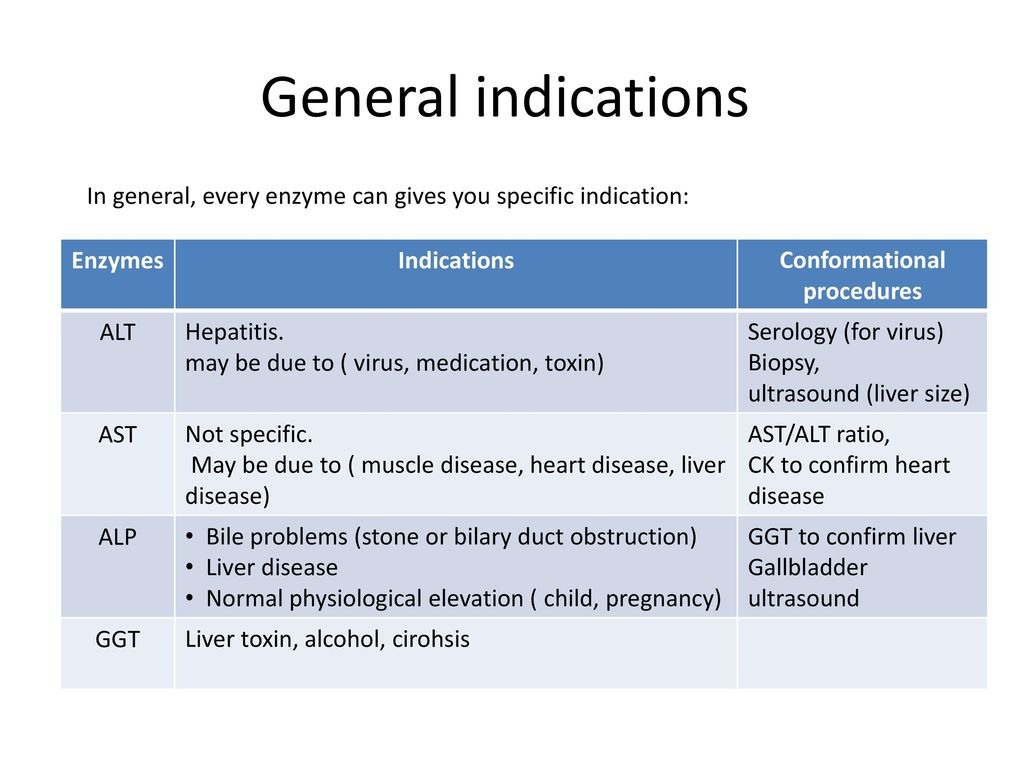 A doctor may also take additional blood tests, imaging tests, or a biopsy to identify or rule out any potential conditions relating to abnormal AST levels.
A doctor may also take additional blood tests, imaging tests, or a biopsy to identify or rule out any potential conditions relating to abnormal AST levels.
Learn about different types of blood tests here.
An AST blood test, or SGOT test, checks how much AST, a liver enzyme, is present in the blood. High levels of AST in the bloodstream could be a sign of liver damage, or cell damage in another organ such as the heart or kidneys.
Doctors may also take additional tests to check other liver enzymes, such as ALT, to get more information on the health of the liver.
what are the norms and what does the deviation mean?
Contents
- 1 Normal ALT and AST values in women: how to evaluate your liver
- 1.1 ALT and AST – what are they?
- 1.2 Related videos:
- 1.3 Blood test for ALT and AST
- 1.4 Normal ALT and AST in women
- 1.5 Abnormal ALT and AST from the norm
- 1.6 Reasons for increasing the level of ALT and AST in women
- 1.
 7 Diseases, causing elevated levels of ALT and AST in women
7 Diseases, causing elevated levels of ALT and AST in women- 1.7.1 Hepatitis
- 1.7.2 Cirrhosis of the liver
- 1.7.3 Obesity
- 1.7.4 Other diseases
- 1.8 Symptoms of elevated levels of ALT and AST in women 9000 8
- 1.9 Diagnosis of elevated levels of ALT and AST
- 1.10 What to do with elevated ALT and AST
- 1.11 Treatment of elevated ALT and AST
- 1.12 Nutrition for elevated ALT and AST
- 1.12.1 Introduction
- 1.12.2 What to eat
- 1.12.3 What to avoid
- 1.12.4 Cooking tips
- 1.12.5 Conclusion
- 1.13 Prevention of elevated ALT and AST
- 1.14 Consequences of elevated levels of ALT and AST
- 1.15 Comparison with elevated levels other blood values
- 1.16 ALT and AST testing for hepatitis
- 1.16.1 Alanine aminotransferase and Aspartate aminotransferase
- 1.16.2 How to prepare for ALT and AST testing
- 1.
 16.3 What the test results mean
16.3 What the test results mean
- 1.17 Effects of ALT and AST on pregnancy
- 1.18 When to see a doctor if ALT and AST levels are elevated
- 1.19 Q&A:
- 1.19.0.1 What is Alt and Ast and why are these indicators needed in analyzes in women?
- 1.19.0.2 What are the normal levels of Alt and Ast in women?
- 1.19.0.3 What can cause an increase in Alt in women?
- 1.19.0.4 What causes an increase in the Ast level in women?
- 1.19.0.5 What does low Alt mean in women?
- 1.19.0.6 What can it mean if the level of Alt and Ast is simultaneously elevated in women?
- 1.19.0.7 Can a low Ast level in women indicate the absence of liver problems?
- 1.19.0.8 How long do elevated levels of Alt and Ast persist in women after drinking alcohol?
Find out which ALT and AST values are normal for women. Useful information about the functions of these indicators and the causes of deviations from the norm.
Alt and Ast are enzymes that are responsible for the functioning of the liver. If their blood levels are elevated, this may indicate a liver problem. A blood test for alt and ast is usually ordered in case of suspected liver disease, but what does a deviation in the level of these enzymes mean in women?
ALT and AST blood levels in women depend on many factors, including age, sex, disease, and medication. But in general, the alt level in women should not exceed 31 units/l, and the ast level should not exceed 34 units/l.
Abnormal alt and ast levels in women may indicate liver problems such as hepatitis, cirrhosis, tumors, and gallstones. However, keep in mind that elevated levels of alt and ast are not always indicative of liver disease. Some medications, such as aspirin, pain pills, and antibiotics, can increase blood levels of these enzymes.
If you have been tested for alt and ast and your blood levels of these enzymes are elevated, be sure to discuss the results with your doctor.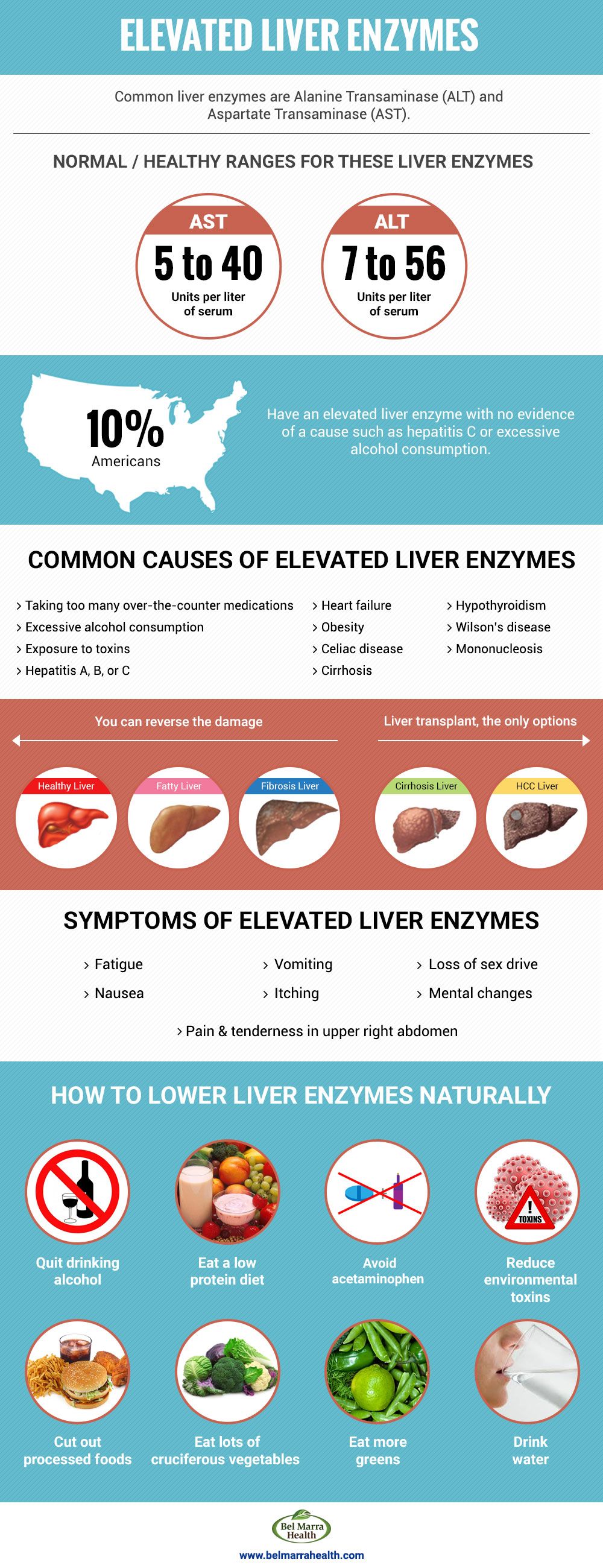 He will be able to assess your ALT and AST levels in the context of your health and determine if additional testing or treatment is needed.
He will be able to assess your ALT and AST levels in the context of your health and determine if additional testing or treatment is needed.
ALT and AST – what is it?
Alanine aminotransferase (ALT) and aspartate aminotransferase (AST) are enzymes found inside liver cells. If liver cells are damaged or destroyed, these enzymes enter the bloodstream. Therefore, an increase in the level of ALT and AST in the blood may indicate the presence of problems with the liver or other organs.
ALT is mainly present in liver cells, but can also be found in heart cells and other tissues. AST is present in the cells of the liver, heart, muscles and other organs.
ALT and AST are often used together in the diagnosis of liver diseases such as hepatitis and cirrhosis. These enzymes can also be elevated in myocardial infarction, rheumatic diseases, and other problems.
Related videos:
youtube.com/embed/e85W3VHgk_M” frameborder=”0″ allowfullscreen=”allowfullscreen”>
Blood test for ALT and AST
Blood test for ALT (alianine aminotransferase) and AST (aspartate aminotransferase) is one of the most common methods for diagnosing diseases of the liver and heart. Both are enzymes that are normally found inside the cells of the liver and heart, but if these organs become damaged or inflamed, ALT and AST are released from the cells into the blood, causing their blood levels to rise.
ALT is routinely screened to diagnose liver diseases such as hepatitis, cirrhosis, and liver cancer. ALT levels can also be elevated with certain medications, jaundice, gallbladder disease, and inflammatory diseases of the biliary tract.
AST, on the other hand, can be elevated in a number of conditions, including heart disease, myocardial infarction, liver disease, and muscle disease. AST levels can also be elevated when taking certain medications.
Elevated levels of ALT and AST in the blood may indicate a specific disease, but these indicators cannot indicate a specific condition. To detect the disease, additional research and examinations are necessary.
In general, elevated levels of ALT and AST usually indicate damage to some organs in the body. If you are found to have elevated levels of ALT or AST, you should undergo further tests to find out which organs are damaged and begin treatment under the guidance of a qualified physician.
Yes
100%
ALT and AST levels in women
Alanine aminotransferase (ALT) and aspartate aminotransferase (AST) are indicators of liver function. Normal blood levels of these enzymes may vary depending on the methodology of the laboratory, as well as the age, sex, and weight of the patient. However, on average, ALT and AST in women have the following norms:
- ALT: up to 34 units / l;
- AST: up to 31 units/l.
If a woman’s ALT and AST levels are higher than normal, this may indicate liver problems such as inflammation, fatty degeneration, or cirrhosis. However, another underlying cause may also be present, such as alcohol or drug poisoning, drug injection, or heart or muscle disease.
However, another underlying cause may also be present, such as alcohol or drug poisoning, drug injection, or heart or muscle disease.
If you have been prescribed ALT and AST tests and find that these levels are abnormal, you should consult your doctor to determine the cause and prescribe the appropriate treatment.
ALT and AST abnormal
Alanine aminotransferase (ALT) and aspartate aminotransferase (AST) are enzymes that help the body make proteins. Normal levels of ALT and AST in women can vary, but are usually in the range of 7-56 units/L for ALT and 10-40 units/L for AST.
Abnormal ALT and AST levels may indicate the presence of liver disease such as hepatitis or cirrhosis. If the level remains elevated for a long time, it can lead to serious complications, including liver failure or liver cancer.
ALT and AST levels may also be elevated in other conditions such as myocardial infarction, pneumonia, or myopathies. This can help diagnose these conditions and track their treatment.
If the levels of ALT and AST strongly deviate from the norm, it is recommended to consult a doctor for additional examination and determination of the cause of such deviation. Early detection and treatment of diseases that can lead to elevated levels of ALT and AST can help maintain health and prevent serious complications.
Causes of increased levels of ALT and AST in women
AST (aspartate aminotransferase) and ALT (alanine aminotransferase) are enzymes that are involved in the process of amino acid metabolism. They are found in the cells of the liver, heart muscle, kidneys and other tissues of the body. If ALT and AST levels are elevated in a woman, this may indicate the presence of the following reasons:
- Liver disease: elevated levels of ALT and AST may indicate the presence of hepatitis, liver cirrhosis, fatty degeneration and other pathological changes. At the same time, ALT levels may rise earlier than AST.
- Taking medications: Many medications can increase blood levels of ALT and AST.
 This is especially true of hepatotoxic drugs that have a negative effect on the liver.
This is especially true of hepatotoxic drugs that have a negative effect on the liver. - Alcoholic liver injury: the presence of an alcoholic mixture can lead to elevated levels of ALT and AST.
- Myocarditis, cardiac muscle hypoxia: when the heart muscle is affected, AST levels can rise much faster than ALT.
- Non-specific elevation: ALT and AST levels may be elevated with various infectious diseases, trauma and surgery.
In any case, if the level of ALT and AST in a woman is elevated, this requires a mandatory examination and identification of the cause in order to prescribe an effective treatment.
Diseases that cause elevated levels of ALT and AST in women
Hepatitis
Elevated levels of ALT and AST may be associated with hepatitis, an inflammation of the liver that can be caused by viruses, alcohol, drugs, and other factors. In hepatitis, ALT and AST are higher than normal due to damage to liver cells and the release of enzymes into the blood.
Cirrhosis of the liver
Cirrhosis of the liver is characterized by the gradual accumulation of damage to the liver cells, which can cause an increase in the level of ALT and AST. With cirrhosis of the liver, the function of the organ is impaired, which can lead to serious consequences.
Obesity
Obesity can be one of the causes of elevated levels of ALT and AST. Fat accumulates in the liver, which can cause it to malfunction and release enzymes into the blood.
Other diseases
Elevated levels of ALT and AST may also be associated with rarer diseases such as myopathy, muscle wasting, thrombosis, myocardial infarction and others. You need to see a doctor for an accurate diagnosis and treatment.
Symptoms of elevated ALT and AST levels in women
ALT (alanine aminotransferase) and AST (aspartate aminotransferase) are enzymes found inside the cells of the liver and other organs. Elevated levels of ALT and AST in the blood can indicate problems with the liver, heart, muscles, and other organs.
In women, elevated levels of ALT and AST may present with the following symptoms:
- Jaundice (a yellowish tinge to the skin and whites of the eyes)
- Enlargement of the liver and spleen
- Nausea and vomiting
- Increased fatigue and weakness
- Decreased appetite
- Pain in the abdomen or right upper quadrant of the abdomen
- Hypersensitivity to drugs and alcohol
- Muscle pain and spasms
If you notice any of these symptoms, you need to see a doctor for diagnosis and treatment. He may order blood tests for ALT and AST levels, as well as other types of tests to identify possible problems with the body.
Do not ignore the symptoms of elevated levels of ALT and AST, as these enzymes can indicate serious diseases that require competent medical attention.
Diagnosis of elevated levels of ALT and AST
A special blood test is performed to detect the level of hormones ALT and AST. This test can help diagnose various diseases of the liver, heart, and muscles.
This test can help diagnose various diseases of the liver, heart, and muscles.
ALT and AST levels may be elevated in the presence of viral hepatitis, alcoholic or toxic hepatitis, liver cirrhosis, infectious mononucleosis, heart and muscle disease. In some cases, an increase in hormone levels may be due to medications taken or tissue damage resulting from an injury.
If the ALT and AST levels are above normal, further investigations are needed to determine the cause of the deviation. Do not panic in advance, because elevated hormone levels do not always indicate a serious illness.
It is important to understand that self-monitoring of ALT and AST levels at home is not sufficient to establish a diagnosis. To do this, you should consult a doctor and perform the recommended tests.
What to do with elevated ALT and AST
If you have been diagnosed with elevated levels of ALT and AST in the blood, do not panic, but do not ignore this fact either. First you need to determine the reason for such a deviation. Usually, elevated levels of ALT and AST indicate complications in the liver.
Usually, elevated levels of ALT and AST indicate complications in the liver.
If elevated levels of ALT and AST are caused by a disease or infection, then the doctor may prescribe appropriate treatment, which is aimed at eliminating the reasons for the increase in these levels.
However, sometimes elevated levels of ALT and AST may indicate the presence of chronic diseases of the liver or other organs. In this case, it is necessary to undergo an examination to determine the causes of this condition and prescribe a suitable treatment.
To lower your ALT and AST levels, you need to follow a proper diet, stop bad habits, take the right medications, and have regular medical checkups.
In any case, ALT and AST levels should be monitored regularly. If you find deviations from the norm, you should consult a doctor in a timely manner and undergo an additional examination to find out the causes and prevent possible complications.
Treatment of elevated ALT and AST
As markers of liver damage, ALT and AST are important indicators of liver disease. If ALT and AST levels are high, treatment depends on the underlying cause of the condition.
If ALT and AST levels are high, treatment depends on the underlying cause of the condition.
If elevated levels of ALT and AST are due to alcoholic or viral hepatitis, then the main treatment is the treatment of the underlying disease. In cases of liver failure, increased protein intake and dietary elasticity may be prescribed.
If elevated levels of ALT and AST are associated with medication or supplements, then these drugs should be discontinued. You may have to replace them with safer alternatives.
For people with elevated ALT and AST levels, it is imperative to control alcohol consumption and the abuse of fatty, rich foods.
Based on the above, you need to understand that elevated levels of ALT and AST require careful consideration and analysis of the causes. Only then can you find the appropriate treatment and make the necessary adjustments in your lifestyle and diet.
Nutrition with elevated ALT and AST levels
Introduction
Women with elevated ALT and AST levels should pay attention to their diet. Diet can have a big impact on the levels of these enzymes in the blood, so it is recommended to follow certain rules when compiling your daily menu.
Diet can have a big impact on the levels of these enzymes in the blood, so it is recommended to follow certain rules when compiling your daily menu.
What to eat
When ALT and AST levels are elevated, a healthy diet is given special attention. Women should eat more fresh fruits and vegetables, as well as protein foods such as fish, chicken, eggs, and cottage cheese. It is also recommended to drink plenty of fluids, including clean water.
What to avoid
Women should limit their intake of fatty and fried foods, as well as sweets and alcohol, to avoid elevated ALT and AST levels. In addition, it is recommended to avoid too much coffee and strong tea.
Cooking Tips
One way to preserve the benefits of food is to prepare it properly. Women should prefer steamed or grilled dishes. Also, if possible, it is necessary to exclude frying in oil and give preference to cold appetizers and salads.
Conclusion
By following simple healthy dietary guidelines, women can lower their blood levels of ALT and AST. Regular consumption of fresh fruits and vegetables, protein foods, limiting fatty, fried and sugary foods, and proper cooking will help maintain a healthy liver and improve overall body health.
Regular consumption of fresh fruits and vegetables, protein foods, limiting fatty, fried and sugary foods, and proper cooking will help maintain a healthy liver and improve overall body health.
Preventing elevated ALT and AST levels
Maintaining a healthy liver and preventing elevated ALT and AST levels in women requires a healthy lifestyle:
- Avoid alcohol and nicotine;
- Watch your diet and avoid fatty, fried and salty foods;
- Maintain a healthy weight and avoid excess weight;
- Exercise regularly;
- Avoid stress and nervous overload;
- Monitor the level of hormones in the body, especially when taking hormonal drugs.
It is also recommended to undergo regular medical examinations and seek medical attention at the first symptoms of liver disease: pain in the right hypochondrium, nausea, vomiting, jaundice, loss of appetite and drowsiness.
If the level of ALT and AST in the blood of a woman is elevated, then it is necessary to consult a doctor for additional examination and determination of the cause of the deviation.
Sample diet to prevent elevated ALT and ASTV Time Meal
| 8:00 | Breakfast: oatmeal with water, apple, green tea |
| 11: 00 | Snack: fruit yogurt, nuts |
| 2:00 pm | Lunch: grilled chicken breast, steamed vegetables, slice of rye bread, water |
| 20:00 | Dinner: steamed fish, vegetable salad, slice of rye bread, water |
ALT and AST levels
Elevated levels of ALT and AST usually indicate liver dysfunction. Such violations can be caused by various reasons: from alcohol or drug intoxication to viral infections or cancer.
One of the first signs of elevated levels of ALT and AST are yellowing eyes and skin, which indicate a violation of the outflow of bile. Other signs may include pain in the right side, bloating, nausea, vomiting, and general weakness.
These signs should not be ignored, as elevated levels of ALT and AST can lead to serious consequences. For example, it can cause cirrhosis of the liver, which in turn can lead to liver cancer and other dangerous diseases. Therefore, if suspicious symptoms appear, you should consult a doctor and undergo an appropriate examination.
For example, it can cause cirrhosis of the liver, which in turn can lead to liver cancer and other dangerous diseases. Therefore, if suspicious symptoms appear, you should consult a doctor and undergo an appropriate examination.
- Suspected or developing acute hepatitis
- Confirmed chronic hepatitis
- Suspected gallbladder disease
- May be caused by certain drugs or high alcohol intake
If found elevated high levels of ALT and AST, measures must be taken to eliminate the cause of its occurrence. For this, special medications, diet, avoidance of alcohol and other suitable measures can be prescribed.
Comparison with elevated levels of other blood parameters
The presence of elevated levels of alanine aminotransferase (Alt) and aspartate aminotransferase (AST) can be caused not only by diseases of the liver, cardiovascular system and muscle tissue, but also by the presence of other indicators in the blood, such as iron, glucose, cholesterol and others.
When comparing the levels of Alt and Ast with other indicators, it is necessary to take into account the possible mechanisms for increasing the levels of these enzymes. For example, an increase in the level of Alt and Ast may be associated with a violation of iron metabolism in the body, which leads to its accumulation in the liver and intensive destruction of liver cells.
However, in the presence of elevated levels of Alt and Ast in combination with other indicators, it is necessary to conduct an additional examination to determine the cause of the increase and further treatment.
- Elevated blood glucose may indicate diabetes.
- Elevated cholesterol levels may be associated with impaired lipid metabolism in the body.
- Elevated iron levels may indicate the presence of hemochromatosis.
ALT and AST hepatitis test
Alanine aminotransferase and Aspartate aminotransferase
ALT and AST are enzymes that are found inside liver cells. They are involved in the metabolism of amino acids and help the body get energy from food. High levels of ALT and AST can indicate liver problems, which is why they are usually included in a standard CBC.
They are involved in the metabolism of amino acids and help the body get energy from food. High levels of ALT and AST can indicate liver problems, which is why they are usually included in a standard CBC.
One of the most common blood tests for ALT and AST levels is a hepatitis test. Hepatitis is an inflammatory disease of the liver that can be caused by infection, alcohol, or toxins. ALT and AST may be elevated in viral hepatitis, and their rise may reflect the degree of liver damage.
How to prepare for an ALT and AST test
To prepare for an ALT and AST test, you must give blood samples. No other special preparatory measures are required. However, alcohol consumption should be limited prior to testing, as it can increase blood levels of ALT and AST.
What the test results mean
The normal range for ALT and AST blood levels may vary depending on the laboratory that performs the test. Generally, ALT and AST levels should not exceed 30 to 40 units per liter (U/L) in women. If the level of ALT and AST is elevated, then this may indicate a toxic or infectious liver lesion.
If the level of ALT and AST is elevated, then this may indicate a toxic or infectious liver lesion.
If the results of the analysis show high levels of ALT and AST, then it is necessary to consult with your doctor to identify the possible cause of the elevated ALT and AST levels and begin treatment.
The effect of ALT and AST on pregnancy
ALT and AST are indicators that can be measured in the blood of a pregnant woman at different stages of pregnancy. They play an important role in assessing the health of the liver, but can also indicate problems with the heart and muscles.
Studies show that elevated levels of ALT and AST in the blood of a pregnant woman can indicate the presence of infection, hepatitis, many other diseases, and also negatively affect the development of the child.
Although elevated levels of ALT and AST alone are not dangerous for pregnancy, if the levels of both are elevated, action must be taken. In this case, the woman should consult a doctor and undergo additional examinations.
In addition, maintaining a healthy lifestyle and proper diet can help reduce the risk of elevated ALT and AST levels. Pregnant women need to pay special attention to their health and monitor the level of these indicators in the blood in order to ensure the health of their child and themselves in general.
When to see a doctor if ALT and AST levels are elevated
If a woman’s blood levels of alanine aminotransferase (ALT) and aspartate aminotransferase (AST) are elevated, it may be a symptom of various diseases of the liver, cardiovascular system and other organs.
If a woman notices symptoms such as fatigue, nausea, jaundice, right upper quadrant tenderness, she should seek immediate medical attention.
It is also recommended that women undergo regular medical examinations in order to identify possible problems of the disease at an early stage.
To diagnose the level of ALT and AST, it is necessary to donate blood for biochemical analysis, which can determine the presence of pathological changes.
If ALT and AST levels are elevated, the doctor may order additional tests to determine the cause of the abnormality and prescribe appropriate treatment.
Question-answer:
What are Alt and Ast and why are these indicators needed in the analyzes of women?
Alt (alanine aminotransferase) and Ast (aspartate aminotransferase) are enzymes that are found in liver cells and are involved in amino acid metabolism. Their blood levels help diagnose liver disease and assess liver function. When deviating from the norm, Alt and Ast can indicate various pathologies that need to be identified and treated.
What are the normal levels of Alt and Ast in women?
The norm of Alt in women is 10-40 U/l, and the norm of Ast is 10-30 U/l. However, these values may differ depending on the laboratory that performs the analysis. Therefore, when studying the results, it is necessary to be guided by the standards specified in the laboratory where the analyzes were carried out.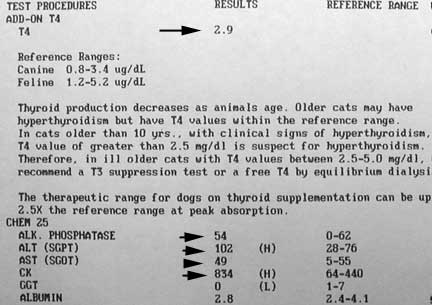
What can cause an increase in Alt in women?
An increase in the level of Alt in the blood in women can be caused by diseases such as viral hepatitis, cirrhosis of the liver, fatty liver, as well as alcohol or toxic drugs. Also, an increase in Alt levels may be associated with muscle damage, along with damage to liver cells.
What causes an increase in Asth levels in women?
An increase in the level of Ast in the blood in women can be caused by liver pathologies (cirrhosis, hepatitis), myocardial infarction, encephalopathy, jaundice. Also, an increase in the level of Ast can be observed in oncological diseases, alcoholism and the use of toxic drugs.
What does low Alt mean in women?
Decrease in the level of Alt in the blood is not a pathology and in itself does not cause any symptoms. However, if the Alt level is reduced, but the Ast level remains normal, then this may indicate a violation of liver function and require further examination and diagnosis.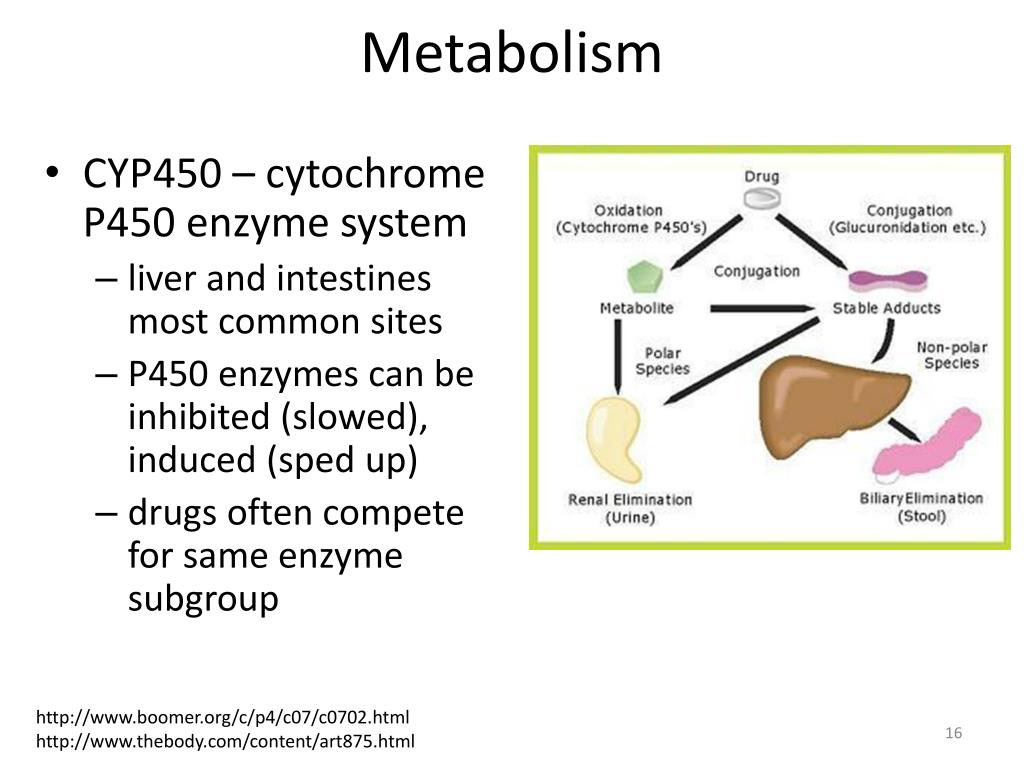
What can it mean if the level of Alt and Ast is simultaneously increased in women?
Simultaneous elevation of Alt and Ast may indicate various liver diseases such as hepatitis, cirrhosis or cancer. Also, an increase in the level of Alt and Ast may be associated with dysfunction of other organs, such as skin, muscles and pancreas. The final diagnosis can only be made after a comprehensive examination and exclusion of other pathologies.
Can a low Ast level in women indicate the absence of problems with the liver?
No, low Ast levels in the blood are not a sufficient criterion for assessing the health of the liver. For a complete diagnosis, it is necessary to conduct a comprehensive examination and analysis of other biochemical blood parameters that will help identify possible pathologies.
How long do elevated Alt and Ast levels persist in women after drinking alcohol?
Increased levels of Alt and Ast in the blood of women may persist up to 4-5 days after drinking alcohol. The more often and more alcohol is consumed, the longer elevated levels of these indicators persist. Stopping alcohol consumption helps bring Alt and Ast levels back to normal levels. However, if elevated levels of Alt and Ast do not decrease for a long time, additional diagnostics and examination are necessary.
The more often and more alcohol is consumed, the longer elevated levels of these indicators persist. Stopping alcohol consumption helps bring Alt and Ast levels back to normal levels. However, if elevated levels of Alt and Ast do not decrease for a long time, additional diagnostics and examination are necessary.
Gamma-glutamyltransferase (GGT) – indications, norm, blood test
EN / ENG / UA
The enzyme was first described by Hanes et al. in 1952 GGT is a microsomal enzyme involved in amino acid metabolism. Catalyzes the transfer of ?-glutamyl residue from ?-glutamyl peptide to an amino acid or peptide (external transpeptidation), as well as to another substrate molecule (internal transpeptidation). Normally, the specific activity of the enzyme is higher than in blood serum, 7000-7500 times in the kidneys, 600-650 times in the pancreas, 200-500 times in the liver.
Insignificant activity of the enzyme is also recorded in the spleen, intestines, brain, lungs, skeletal muscles, heart, prostate.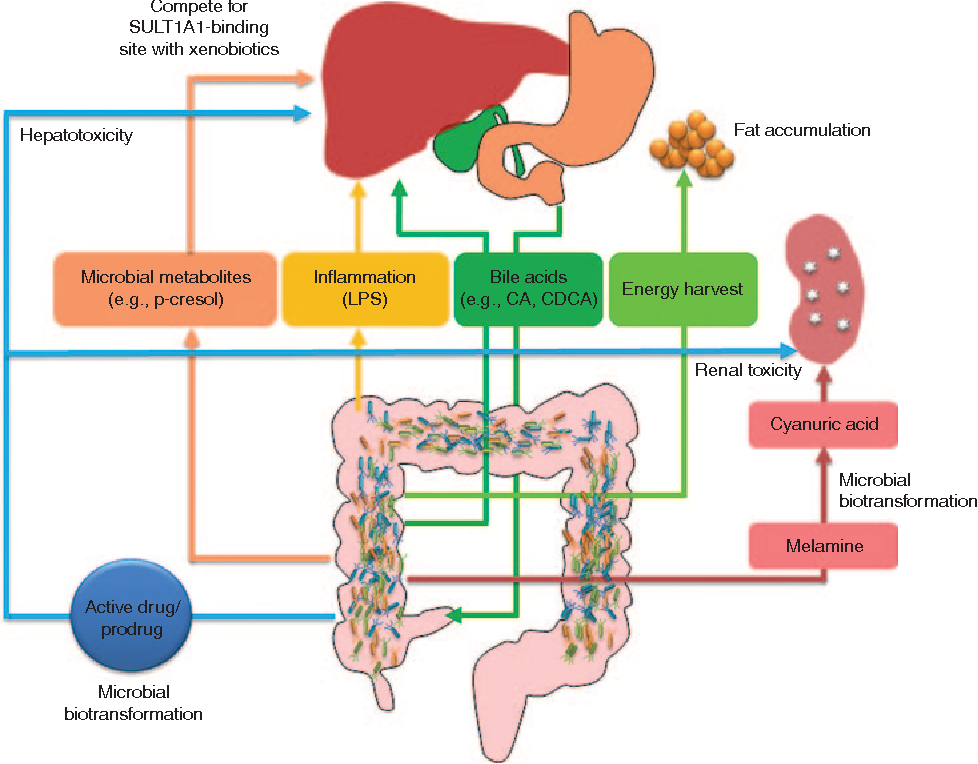 The enzyme is found in lysosomes, membranes, and cytoplasm of the cell, and membrane localization of GGT is characteristic of cells with high secretory, excretory, or reabsorption capacity. In the blood plasma of newborns, the activity of gamma-glutamyltransferase is 8-10 times higher than in adults, and even more in preterm infants.
The enzyme is found in lysosomes, membranes, and cytoplasm of the cell, and membrane localization of GGT is characteristic of cells with high secretory, excretory, or reabsorption capacity. In the blood plasma of newborns, the activity of gamma-glutamyltransferase is 8-10 times higher than in adults, and even more in preterm infants.
During 7-9 months of life, GGT activity in the blood decreases, remaining constant until puberty. The level of the enzyme is also influenced by gender differences. In adolescents from 13 to 17 years old and in adults, the reference values of gamma-glutamyl transpeptidase activity for women are 20-25% lower than for men.
Diagnosis of gamma-glutamyltransferase
Determination of GGT activity in blood serum has become of great importance for the diagnosis of diseases of the liver and hepatobiliary tract, and an increase in serum GGT values is a sensitive indicator in diseases of the hepatobiliary system (marker of cholestasis)
Serum GGT levels increase in all forms of liver disease. The highest activity of the enzyme in cases of obstructive liver damage (5-30 times higher than normal values). This is a more sensitive indicator of liver pathology than ALT and AST in the diagnosis of obstructive jaundice, cholangitis and cholecystitis. The increase in GGT in these cases is observed earlier and lasts longer than other liver enzymes. The activity of gamma-glutamyl tranpeptidases in infectious hepatitis is 2–5 times higher than normal (in these cases, the determination of GGT is less useful than ALT and AST). In almost 100% of cases in cancer patients with liver metastases (without jaundice and with jaundice), a very significant increase in enzyme activity (12 or more times higher than normal) was found. Moreover, changes in activity gamma-glutamyl transferases are observed earlier and are more pronounced than the activities of other enzymes. A slight increase in GGT (2-5 times) is observed in patients with fatty degeneration of the liver.
The highest activity of the enzyme in cases of obstructive liver damage (5-30 times higher than normal values). This is a more sensitive indicator of liver pathology than ALT and AST in the diagnosis of obstructive jaundice, cholangitis and cholecystitis. The increase in GGT in these cases is observed earlier and lasts longer than other liver enzymes. The activity of gamma-glutamyl tranpeptidases in infectious hepatitis is 2–5 times higher than normal (in these cases, the determination of GGT is less useful than ALT and AST). In almost 100% of cases in cancer patients with liver metastases (without jaundice and with jaundice), a very significant increase in enzyme activity (12 or more times higher than normal) was found. Moreover, changes in activity gamma-glutamyl transferases are observed earlier and are more pronounced than the activities of other enzymes. A slight increase in GGT (2-5 times) is observed in patients with fatty degeneration of the liver.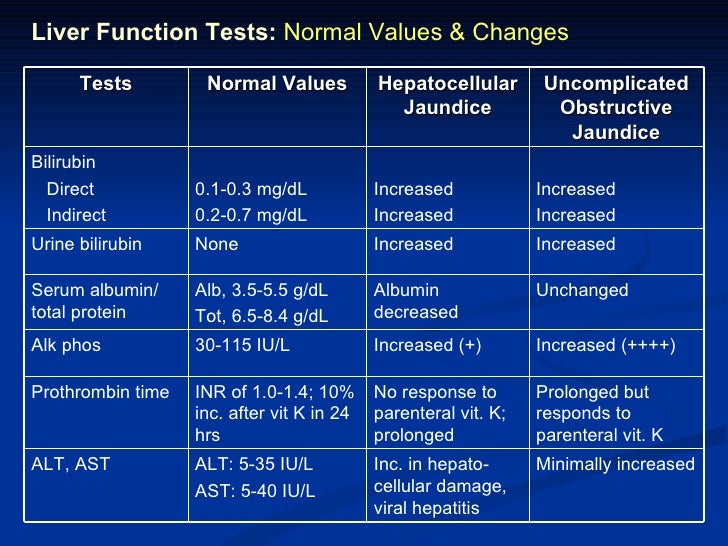
An increase in enzyme activity is caused by many substances, especially drugs that can induce microsomal oxidizing capacity, as well as any oxidative stress (including diabetic ketoacidosis). After stopping the administration of drugs, GGT activity gradually returns to normal. In patients suffering from acute or chronic pancreatitis, malignant diseases of the pancreas, GGT activity, as a rule, exceeds the norm by 5–15 times.
High GGT activity was noted in the blood of alcoholics. There are certain differences between the activity of GGT in the blood of alcoholics and people who have taken a significant dose of alcohol (in the latter, even after severe intoxication, an increase in activity is observed only for 12 hours and does not exceed 15% of the norm). Therefore, gamma-glutamyltransferase is used to monitor the effectiveness of the treatment of patients with alcoholism. The high specific activity of GGT in the prostate gland, so it can be used as a marker of malignant diseases of the prostate gland. The study of GGT activity in brain lesions has acquired great clinical and diagnostic significance.
The study of GGT activity in brain lesions has acquired great clinical and diagnostic significance.
Parallel determination of the activity of GGT and alkaline phosphatase (in cases of its increased activity) helps when it is necessary to decide whether their source is an altered bone metabolism or the presence of hepatobiliary disorders, because. in conditions in which alkaline phosphatase is elevated (in healthy pregnant women, in children older than 1 year, in cases of bone diseases), GGT is within normal limits.
Indications for Gamma-glutamyltransferase test
- Diagnosis and differential diagnosis of liver lesions
- Monitoring of the course of pancreatic, prostate, hepatoma cancer
- Screening for alcoholism, monitoring the treatment of people with chronic alcoholism
- Evaluation of hepatotoxicity of drugs
Examination
Examination preparation: fasting blood sampling
Examination material: blood serum, avoid hemolysis
Method of determination : kinetic (IFCC)
Units of measurement : U/l
Reference values (normal gamma-glutamyltransferase in blood)
| Age and sex 9 0549 | Norm of gamma-glutamyl transfer |
|---|---|
| up to 6 months | < 204 U/l |
| 7-12 months | < 34 U/l |
| 1-3 years | < 18 U/l |
| 4-6 years | < 23 U/l |
| 7-12 years old | < 17 U/l |
| men 13-17 years old | < 45 U/l |
| women 13-17 years old | < 33 U/l |
| men > 17 years old | < 55 U/l |
| women > 17 years old | < 38 U/l |
Increased gamma-glutamyl transpeptidase values
If you have high GGT, possible reasons for this may be:
- Intra- and extrahepatic cholestasis
- Acute viral hepatitis, toxic, radiation damage to the liver
- Chronic hepatitis
- Acute and chronic pancreatitis
- Alcohol-induced liver injury
- Infectious mononucleosis
- Hyperthyroidism
- Myotonic dystrophy
- Diabetes mellitus
- Kidney pathology (exacerbations of chronic glomerulo- and pyelonephritis)
- Cancer of the pancreas, prostate, hepatoma
- Taking medications (barbiturates, phenytoin, rifampicin, cephalosporins, estrogens, oral contraceptives, acetaminophen)
The cost of a blood test for the content of gamma-glutamyltransferase
A blood test for the content of gamma-glutamyltransferase costs 35 UAH. It is carried out within 1-2 days. The cost of taking material for research is paid separately (15 – 25 UAH).
It is carried out within 1-2 days. The cost of taking material for research is paid separately (15 – 25 UAH).
You can get full information about the service from our laboratory assistant.
Medical equipment of our laboratory.
Consultation of a laboratory doctor
Reviews
Currently I am a resident of the Crimea, I learned about the unique methods of treatment in the Clinic, I came here with problematic… !
I came to the CDC with pain in the joints, severe varicose veins, complaints about the work of the stomach.
After…
It so happened that I was already falling off my feet. I had problems with the thyroid gland, my bones hurt a lot,…
I have been sick for a long time. The joints are very sore, the thyroid gland is worried. The joints hurt both under load and in the state…
I have worked as a teacher at the Medical Academy for 35 years, I have been suffering from rheumatoid arthritis for more than 10 years.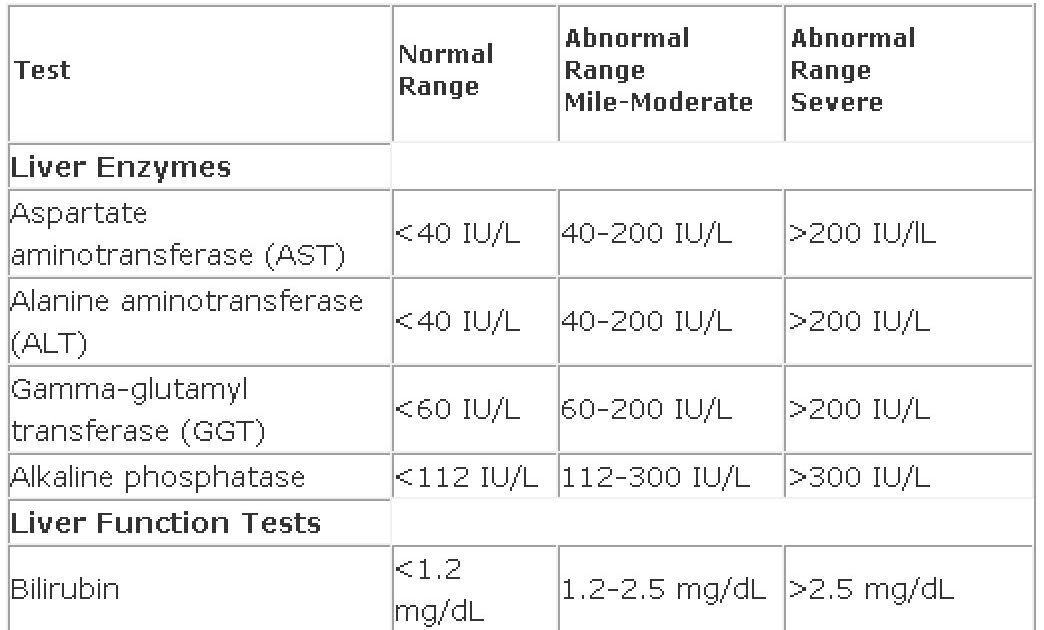 …
…
I ended up in a clinic with problems of the pancreas. Having passed the diagnostics and the course of treatment, I was satisfied and …
I want to express my heartfelt gratitude to Yuri Nikolaevich Kulikovich for the creation of such a clinic, for the good …
We have come from far away, and we are very touched by the care and attention that surrounded us in the Clinic. Thank you very much…
Complaints about the musculoskeletal system forced me to go to the clinic, my knees and hips hurt… gratitude to the whole team of the Kulikovich Clinic for the assistance rendered to me in the treatment, in…
The first thing that impressed me was the fashionableness, but this is a shell. The most important thing is that during the treatment I…
I am very grateful to the people who work here for the kindness and warmth that they radiate, for the attitude that…
17 years of work experience. I work in the Central District Hospital of Verkhnedneprovsk.

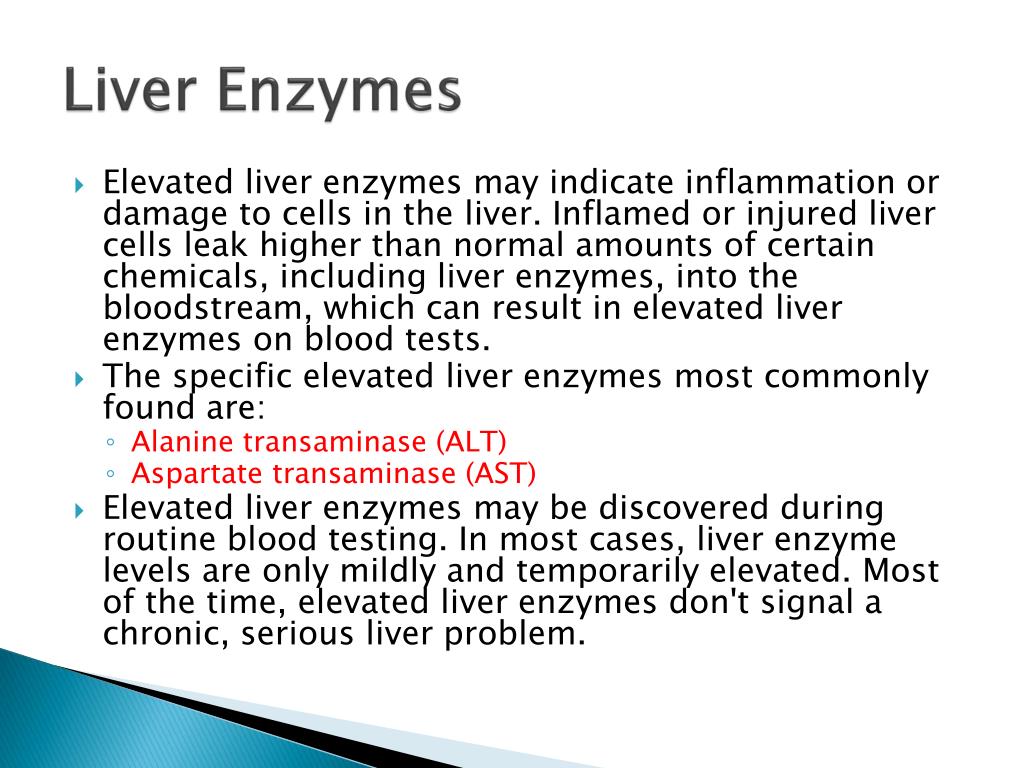 7 Diseases, causing elevated levels of ALT and AST in women
7 Diseases, causing elevated levels of ALT and AST in women 16.3 What the test results mean
16.3 What the test results mean
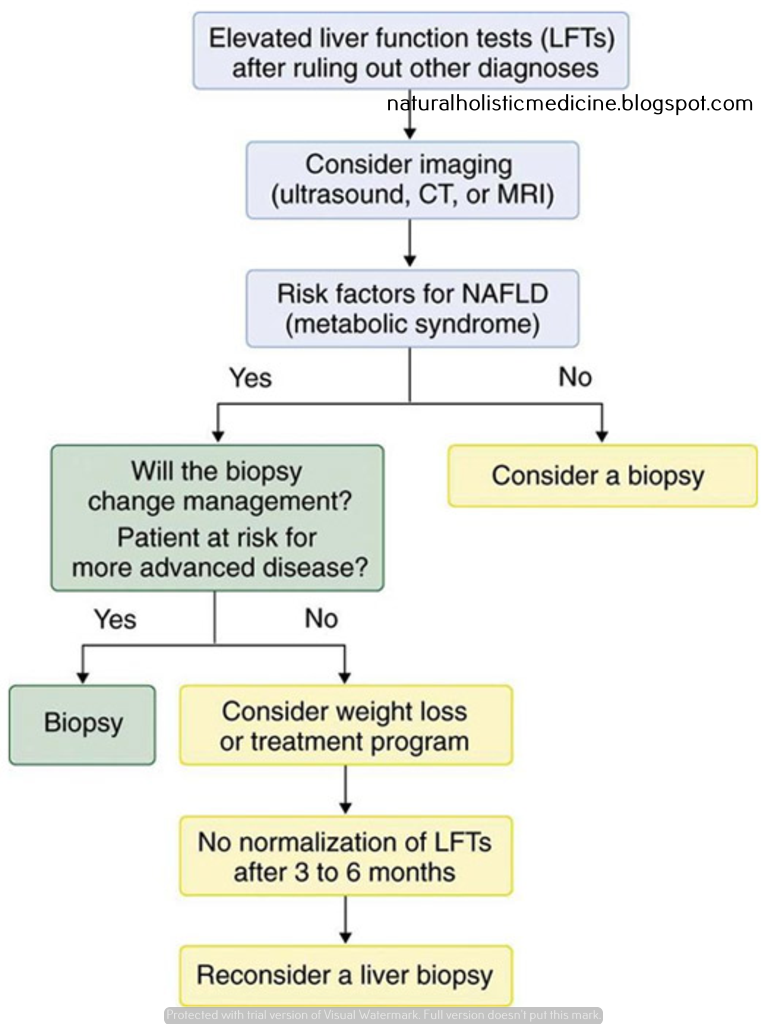 This is especially true of hepatotoxic drugs that have a negative effect on the liver.
This is especially true of hepatotoxic drugs that have a negative effect on the liver.